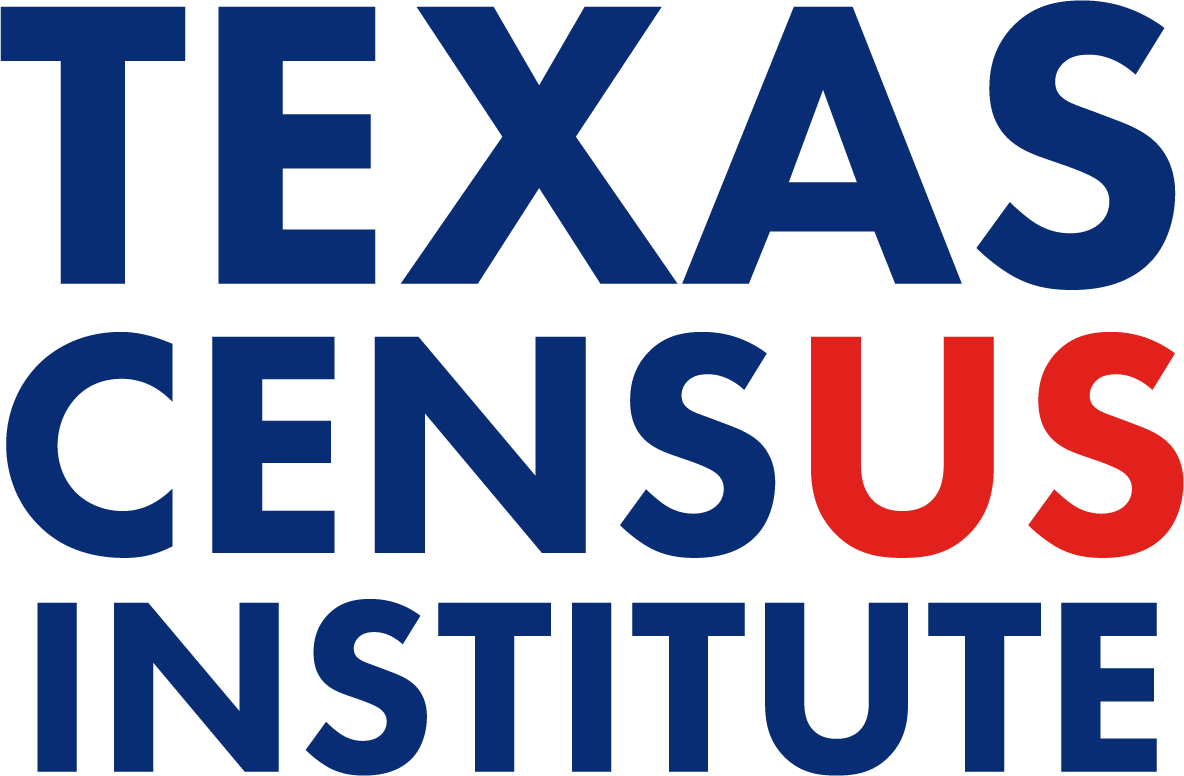BLOG | Children | November 2023
The 2020 Census Undercount of Young Children in Texas Counties

Introduction
The Texas Census Institute has created the Children’s Census Initiative to improve the accuracy of the 2030 Census count of Texas children. The Initiative comprises five related parts, each tackling a specific aspect of the 2020 Census child undercount. This week TxCI released its third research brief in this series, describing the net undercount of young children, assessed by county and region. The brief was developed for TxCI by Dr. Francisco A. Castellanos-Sosa, Senior Research Associate and Dr. William P. O’Hare of the Count All Kids Campaign.
Background
According to Dr. Castellannos-Sosa and Dr. O’Hare, the census is unavoidably imperfect in its assessment of population numbers. Some groups of people are not counted, while others are overcounted. In addition, limited data exist for researchers in need of information about undercounts at the county or regional level, two important areas of measurement for city planners and community serving organizations like schools and hospitals.
Since 1970, one of the groups missed at the highest rate is young children. In the 2020 Census, the undercount rate for young children (5.4%) was the largest ever.
Since 1970, one of the groups missed at the highest rate is young children. In the 2020 Census, the undercount rate for young children (5.4%) was the largest ever. Three groups (Hispanics, young children (aged 0 to 4), and American Indian and Alaskan Natives living on Indian reservations) made up the bulk of the undercount, but little is known about where they are located or how to better reach them.
Main Findings
Why County-by-County Undercounts Matter?
State-wide numbers can mask big differences within a state the size of Texas, and it is vital to study these figures at the county and regional level.
Texas counties experienced an average young child undercount of 613 children and an average rate of 7.7% by county; however, the young child undercount in Texas counties ranges from a net undercount of 29,865 in Harris County to a net overcount of 1,024 in Coryell County. Regarding net coverage rates, Texas undercount rates range from a net young child undercount of 55.6% in Loving County to a net young child overcount of 115.4% in Jeff Davis County.
Figure 1 Net undercount rate for children’s age groups: 1970–2020.

It is relevant to remember that the small population of some counties might translate any undercount into a high rate. Harris County, with almost five million people, is the most populated Texas county, with a net young child undercount rate of 8.7%. On the other side, Loving County experienced Texas’ highest net young child undercount rate (55.6%) by undercounting only five young children.
The discovery of county-level clustering raises an important question: Is the undercounting of young children a regional phenomenon, and if it is, how might this phenomenon be accurately assessed?
Identifying Regions Where the Undercount Is Most Prevalent
TxCI’s new data show that roughly one of every four young children undercounted in Texas is from the Gulf Coast region, with an undercount of 40,031. Similarly, almost one of every four young children undercounted in Texas is from the Metroplex region, with an undercount of 34,811.
One of every five young children undercounted in Texas is from the South Texas region, with an undercount of 29,806. Among border counties, all but Terrell County and Jeff Davis County had a net young child undercount. (See full table at texascensus.org)
While rates show higher young child undercounts close to the U.S.-Mexico border and in the Gulf Coast and Metroplex regions, some of these rates may be deceptive, arising as a function of border counties having a smaller young child population. On the other hand, in densely populated areas like DFW, the presence of a high child undercount as both a percentage and number of the child population may be a significant finding for researchers and planners as they target resources and develop appropriate interventions and responses.
Figure 2 Net young child undercount in Texas counties.
a) Net young child undercount number (total)

b) Net young child undercount rate (%)

Next Steps
So far, TxCI’s data raise almost as many questions as they answer and while useful in filling knowledge gaps, the findings of the newest brief in our series, THE 2020 CENSUS UNDERCOUNT OF YOUNG CHILDREN IN TEXAS COUNTIES, definitively point towards a need for deeper regional exploration of the determinants of young child undercounts.
In the meantime, the findings provided in this brief contribute to our understanding of the quality of the 2020 Census at a more granular level, beyond state-level measures which often mask large differences among counties.
The information will help the U.S. Census Bureau and census stakeholders prepare for the 2030 Decennial Census as they pinpoint places that deserve special attention to ensure an accurate count of young children. Researchers will also be able to use these findings as a starting point to examine characteristics that distinguish counties with high net young child undercounts from other counties. Identifying those characteristics may even help reduce net young child undercounts.
Doing the work of building a statewide collaborative supported by solid data, is core to the mission of the Texas Census Institute. Accurate census data equip policymakers, community-based organizations, and businesses to make informed decisions that shape our state’s future. These data are the foundation upon which we will build a better Texas for generations to come.
SIGN UP for our email updates and follow us on LinkedIn to be notified as our research is released or PARTNER WITH US to create a stronger, safer, and more prosperous Texas.








